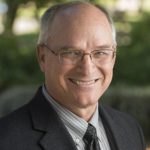“Habemus Papam!”
“Habemus Papam!”
This is the Latin phrase shouted yesterday by crowds in Rome when the white smoke signaling the choice of new pope rose into the air, and when Pope Francis I appeared in his white robes. Mennonites and Evangelicals have historically not been much interested in the papacy, but all of that has changed both among these traditions which have been founding and majority Christians among FPU students and faculty, and at FPU.
At FPU Roman Catholic students are our largest single religious denomination. If you group together other denominations in to families (non-denominational, Evangelical, or Charismatic, for instance) you will get larger numbers, but as a single body Roman Catholics are first at somewhere around 18-20% of the total student body, about 14% on the Fresno Campus, and just under 30% among our degree completion students in the regional centers. Over the years we have had various Catholic student clubs, and Catholic-Protestant clubs meeting to understand each other and for unity in faith. And some of our students are passionately faithful Catholics for whom a new pope is a great sign of hope and of Jesus’s care for his Church. We celebrate with them!
But Francis I in choosing the name he has, and in his reputation for serving the poor in Buenos Aires, for living humbly, and for pastoral care resonates with our practice of service and mission. And it resonates with our understanding of the practical following of Jesus at the center of our faith.
Some commentators have emphasized already (it’s been less than 24 hours) that Francis brings a new sense of openness, pastoral warmth, and willingness to engage with the people of the Church and the world. Our memories are short, however (says the historian). It wasn’t long ago that this was one of the hallmarks of the great papacy of John Paul II with his appeal to the youth of the world. And if Benedict XVI was not as open and warmly personable as his predecessor, he was one who carried on John Paul II’s pastoral concerns. His first encyclical was entitled “Deus Caritas Est,” God is Love, and his major accomplishment may well be his three volumes on the life of Jesus. It is a good time for Catholics and Protestants to be together at FPU. We represent in a small way the healing of the wounds of division that have separated us for almost 500 years.
There is one more thing that we from different denominational traditions can share in the coming years and decades, I think. For the past generation Evangelicals, Mennonites and Catholics have been joining hands over two shared commitments: common moral and social concerns, and a witness to traditional, orthodox, or Biblical beliefs in Jesus as redeemer and Lord. We have grown together as wings in many of the denominations and unaffiliated movements have left these more traditional commitments and turned to alternative understandings of Jesus, and identified social programs and electoral politics as the practice of the faith. Our churches have split within themselves and the divided wings have found partners among other denominations.
One of the more prominent examples of this is the group of thinkers who produced the joint statement “Evangelical and Catholics Together.” Fr. Richard John Neuhaus of First Things and Chuck Colson of Prison Ministries International led the movement. And more recently George Weigel, biographer of John Paul II, has written of “Evangelical Catholicism.” Among its defining characteristics, he writes, are “friendship with the Lord Jesus Christ,” “conversion of life” and “participation in works of service and charity,” and being “biblically centered…that reads the Bible as the Word of God for the salvation of souls.” Evangelical Catholicism, he says, “awaits with eager anticipation the coming of the Lord Jesus in glory,” is “ordered to mission–the proclamation of the Gospel for the world’s salvation,” and “enters the public square with the voice of reason, grounded in gospel conviction.” (See First Things, March 2013, available through the Hiebert Library’s databases.) Along with these characteristics that many will share, are others of specifically Catholic doctrine and practice that they will not. But the common commitments that have animated the spiritual life and practice of FPU are here, shared among bodies of believers that were once divided.
I have found this life of, as we sometimes say, “Evangelical, Anabaptist and Ecumenical” Christianity at FPU spiritually and intellectually enlivening. It has been my honor to teach our students, both Protestant and Catholic, about their “Catholic” history and ancestors. We are part of the Christian world that is bringing together sisters and brothers from many of the divided churches for learning, faithfulness to God’s call, and service to our churches, communities, schools, businesses, city, and world.
We celebrate with our Catholic students a new pope, Francis I. In some ways we can all say “Habemus papam!”




